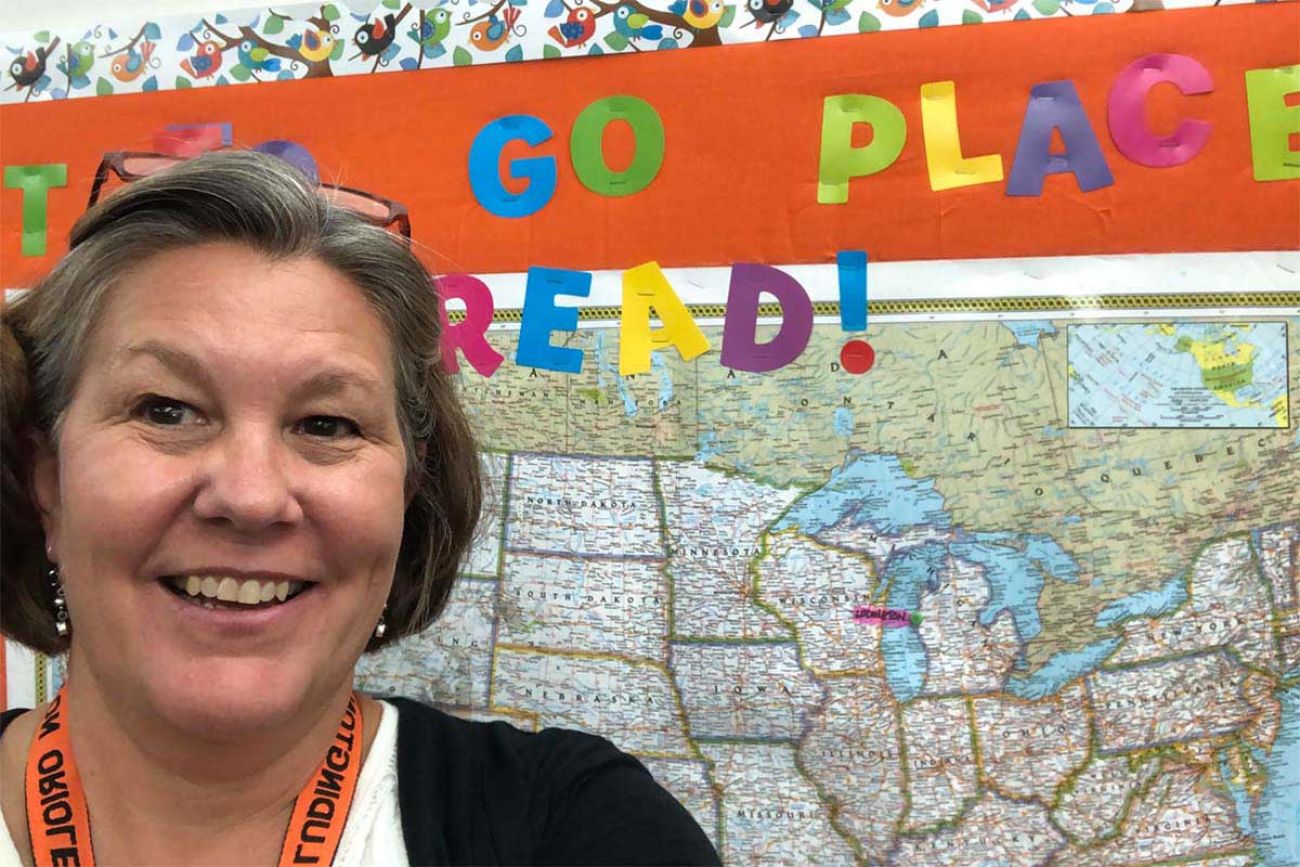Michigan teacher: Kids are heroes but something is going to break

March 10, 2022: Two Michigan educators exiting this month, many others may soon follow
It’s been a tough year for Ludington Area Schools’ fifth-grade teacher Ingrid Fournier. She sleeps more. She hikes more. She drinks more. Sometimes, she cries at the wheel of her Toyota RAV 4 as she drives to Foster Elementary in the morning, wondering how many children will be in class that day.
“I can’t remember a day when they were all there,” Fournier said.
Between positive COVID tests, quarantines and parents pulling students from school so they can de-stress, Fournier said she’s never sure who will be in class, or how far behind they’ll be after days or weeks away.
Related:
- Michigan State University, U-M will require COVID booster shots
- Michigan has an obesity problem. That could make COVID even worse
- Michigan lawmakers vote to allow bus drivers, lunch aides to serve as substitutes
“I’ve been teaching for 26 years, and the phrase I keep returning to is that it’s unsustainable,” Fournier said of teaching during COVID.
Bridge Michigan spoke with the veteran teacher recently to help chronicle what life is like inside a typical Michigan classroom during the third school year impacted by the COVID-19 pandemic. Every school and classroom is different, and Fournier doesn’t speak for all teachers, but her description is similar to that described to Bridge by many other educators.
This interview has been edited for length and clarity.
Ludington and most Michigan schools have, generally, been held in-person this year. What has attendance been like in your classroom?
I have 27 students on my roster. In a normal year, on a regular day, I’d have 25, 26, or 27 of them here. This year, the average is probably 20 to 22.
Why are so many absent?
I’ve had five who have tested positive themselves, and when that happens they’re out for 10 school days. We’ve had others out because of close contact (with those who tested positive), some with close contacts in their homes.
I’m seeing more absences than before because parents were like, “We’re going to keep them home.” We’ll get a note saying why the student isn’t there, and it’ll say “personal day.”
We’ve had one student who stayed home this week because the parents were afraid he would get COVID before the holidays.
What’s been the impact on learning?
My fifth-graders haven’t had a full, normal school year since they were in second grade. It’s like we’re teaching them how to do school again.
For students in class, everything is (taught) slower, with more explanation.
(For those not in class), we post the homework assignments online; and then they access on their (school-supplied) iPad. They’re supposed to turn those (assignments) in, but that’s not happening for the majority of kids.
If you’re doing quizzes, you’re left with the question: Do you punish the kids who were home? Because the gaps are bigger. The high (achieving) kids are high, and the low are low, but there aren’t as many in the middle.
So are you making allowances in your grading, or are grades down?
Both.
I don’t blame the students. They’re heroes. They’re living with fears. There’s COVID. There are school shootings. And they keep clomping along.
How are you and your colleagues holding up?
We’ve had four positive COVID teachers in the past two week. Our principal and assistant principal were substitute teaching. Our parapros with associate’s degrees were subbing. Our secretaries are so overwhelmed with contacting parents to tell them to pick up Johnny because they tested positive, and antigen testing, and recording results. It’s all Band Aids to get through the school day.
My teaching partner (who teaches math and science while Fournier teaches English and social studies) was out for 10 days recently with COVID, and one of those days, I remember driving to school and crying.
I’m usually the optimist in the room, but this is just unsustainable. It is an emergency situation. We are so strained, something’s going to break.
We don’t know when things are going to get back to normal. Is there anything you’d suggest that could help?
We need nurses in our schools. We need a heck of a lot more counselors for students whose needs are higher than they’ve ever been.
We’re trying to raise the red flag, but we’re so exhausted.
Michigan Education Watch
Michigan Education Watch is made possible by generous financial support from:
Subscribe to Michigan Education Watch
See what new members are saying about why they donated to Bridge Michigan:
- “In order for this information to be accurate and unbiased it must be underwritten by its readers, not by special interests.” - Larry S.
- “Not many other media sources report on the topics Bridge does.” - Susan B.
- “Your journalism is outstanding and rare these days.” - Mark S.
If you want to ensure the future of nonpartisan, nonprofit Michigan journalism, please become a member today. You, too, will be asked why you donated and maybe we'll feature your quote next time!






